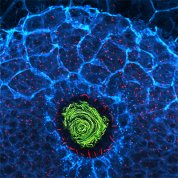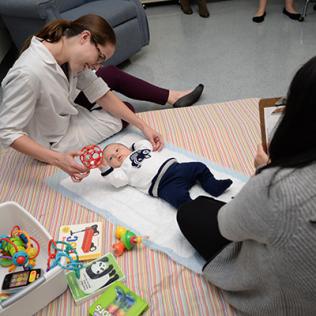
On the Cover
NHLBI-supported researchers are reporting new insights into how hair-like cellular structures called cilia are able to sense biomechanical forces to shape the heart and other organs during embryo development. The findings, published in the journal Science, could lead to better ways to diagnose and treat congenital heart disease. Shown is a fluorescent microscope image of a zebrafish embryo highlighting cilia (red), fluid flow (green) and the plasma membrane (blue) inside a small cluster of cells called the left-right organizer. February is American Heart Month. Congenital Heart Disease Awareness Week is Feb. 7-14.
Shiaulou Yuan (Massachusetts General Hospital and Harvard Medical School) and Zhaoxia Sun (Yale University)





